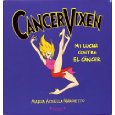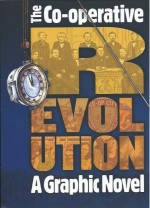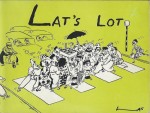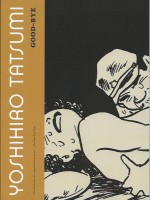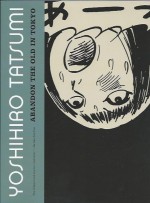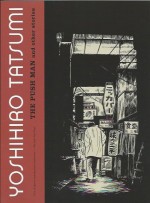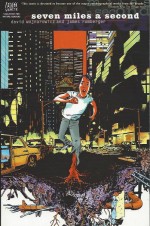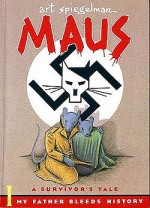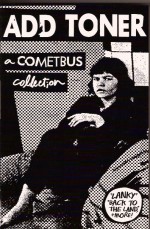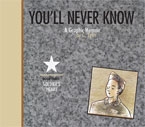
By C. Tyler (Fantagraphics Books)
ISBN: 978-1-60699-588-8
Win’s Christmas Gift Recommendation: an ideal example of Art for Our Sake… 10/10
In 2009 illustrator, educator, performer and occasional cartoonist Carol Tyler (The Job Thing, Late Bloomer) published the first of a trilogy of graphic memoirs examining her tempestuous relationship with her father. Chuck, a veteran of World War II and by all measures A Good and Decent Man, had been a mystery and painful cipher to his girl for years but everything changed one day in 2002.
After six decades of brusque taciturnity and scarily obsessive sublimating self-reliance, during which he had edited his service career out of his life, Chuck suddenly and explosively opened up about his time in Africa and Europe. However, he would not or could not recall his later experiences in Italy and France as the War staggered to a close…
Disease and growing infirmity had suddenly produced in her once strong-but-distant father a terrifying openness and desire to share his long-suppressed war experiences and history.
As if suddenly speaking for an entire generation who fought and died or survived and somehow soldiered on as civilians in a society with no conception of Post Traumatic Stress Disorders, Chuck Tyler began to unburden his soul.
Galvanised and hungry to learn more, Carol began creating an album of his army years but soon came up against a mental blank-period: one for which no corroborating records existed. For, as much as he could effusively recall, there was so much more that had been excised from Chuck’s mind and apparently erased by the government…
It became a quest: a relentless search for hidden truths which abruptly collapsed when the irritably mutable elder suddenly turned on her and the painful, frustrating search for the past.
In 2010, second volume Collateral Damage was released and found Carol coping with her own husband Justin‘s infidelities, mental dilemmas, betrayal and desertion. This led to a resumption of the father-and-daughter recording and re-ordering of Chuck’s recollections of Italy and France (including the infamous Battle of the Bulge) whilst re-examining her own agonisingly chaotic, self-destructive existence and hidden demons.
Carol was forced to examine her troubled past through a new lens. How much did growing up the child of a devoted, loving husband who was incomprehensibly somehow a coldly, unapproachable father, shape her own parade of life-errors and marital mishaps?
Could she prevent her increasingly wild daughter Julia from perpetuating the cycle by making the same bad choices she had?
As her parents’ physical and mental states inexorably deteriorated, Chuck had become obsessed by the mystery of the missing months he’d forgotten and a potential “Government Pay-outâ€. In his more open and lucid moments he gratefully accepted Carol’s aid in trying to solve the dilemma and so the pair began to explore numerous Federal and Veteran’s Administrative archives and resources…
During an increasingly critical reappraisal of the family’s shared experiences, Carol subsequently discovered how her mother Hannah or “Red†had coped with dark tragedies and suppressed secrets on the Home Front, and gained enhanced perspective but no satisfactory answers to the continuing conundrum of her father.
Rushing to finish her self-appointed task of turning her father’s life into a comprehensible chronicle whilst her parents both visibly declined with every visit, Carol’s personal life was also becoming uncontrollable and too much to endure…
Exploring three generations of a family born out of collateral damage and which never truly escaped WWII, the saga concludes with the revelatory breakthrough moments of Soldier’s Heart, opening with a moving visual introduction by Carol and Red before revealing how Julia’s spiralling behavioural problems brought a chastened and resolutely repentant Justin back into the fold. Julia’s troubles prove to have a biological and psychological basis and, whilst Justin came back into their lives, he never made it to Carol’s bed. As the once-marrieds moved into a new holding pattern, the cartoonist’s military searches brought her to the actual man of her dreams but family loyalty kept him from her too…
With ‘The Mind’ awhirl Carol found solace and renewed balance by adopting a miraculous dog before embarking on a frighteningly close shave involving Chuck, a gun and a mouse in ‘The X-mas Tale’ whilst New Year ruminations on the price soldiers always pay and how we honour the fallen in ‘Dulce et Decorum Est’ and ‘Walking the Mat’ bring the pensive and elegiac narrative to ‘Dad’s Army Scrapbook and Tour of Duty Highlights part V: Rhineland Dec. 1944-Mar. 1945’…
Here at last the researches find a crucial turning point as Chuck’s broken memories and the records pinpoint a discrepancy – although the old soldier’s recall describes his duties and exploits up to March when he was sent home, the files show that he didn’t get back to America again until November…
Further investigations and a growing network of helpful contacts lead them towards the National Archives Personnel Records Center in St. Louis and Carol resolves to take her folks on an epic road trip to Missouri. Although personally revelatory, the excursion turns into a frustrating bureaucratic nightmare in ‘Prairie Trek by Truck with Hannah and Chuck’ and advances the Tour of Duty Scrapbook not one jot.
Now the project’s very last hope is a ‘Trip to the National Archives and WWII Memorial – Washington, D.C. 2004’ but the journey is almost finished before it’s begun when Chuck’s latest home-improvement project turns the family home into an asbestos-soaked death-trap and the old man’s toxic other self resurfaces.
With relations between father and daughter at their lowest ebb for years, the Washington excursion begins with little hope for success but leads unbelievably to a spectacular and moving breaking of the mental dam and subsequent epiphany of shocking proportions…
The story doesn’t end there but moves on to re-begin for the Tyler clan and there’s still one last moving ‘Epilogue’ before the close of this very special, grimly life-affirming account.
Ruminative, pensive and moodily elegiac with a series of stunning set-piece illustrations eerily reminiscent of American master of stoic isolation Edward Hopper blending into a mixed palette of cartooning and illustration disciplines, C. Tyler’s art adroitly mirrors her eclectic, entrancing non-sequential story-form, with a beguiling, bewildering array of styles meshing perfectly and evocatively to create a fully immersive comics experience.
Offering warmth, heartbreak, horror, humour, angst, tragedy, triumph and hope in a seductive display simultaneously charming and devastatingly effective, this grand narrative is itself constructed like a photo album (hardback, landscape and copiously expansive at 310x265mm) redefining the eternal question “How and Why Do Families Work?â€
The mystery of the Soldier’s Heart is a magnificent conclusion to Tyler’s triptych of discovery and one no lover of comics or student of the human condition should miss.
© 2012 C. Tyler. All rights reserved.

